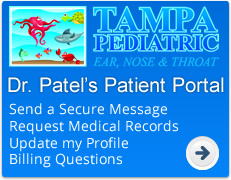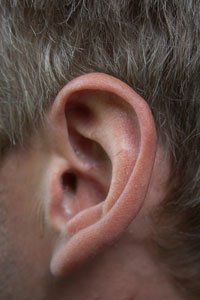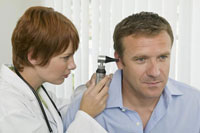|
|
 |
|||||||||
Cerumen RemovalWax blockage is an obstruction of the ear canal with wax (cerumen). Causes
Ear wax protects the ear by trapping dust, bacteria and other microorganisms, and other foreign particles to prevent them from entering and damaging the ear. Ear wax also helps protect the delicate skin of the ear canal from becoming irritated when water is in the canal. The wax usually makes its way to the opening of the ear, where it falls out or is removed by washing. In some people, the glands produce more wax than can be easily removed from the ear. This extra wax may harden in the ear canal and block the ear. More commonly, wax may block the ear canal if you try to clean the ear and accidentally push wax deeper into the ear canal. Wax blockage is one of the most common causes of hearing loss. Symptoms
TreatmentMost cases of ear wax blockage can be treated at home. The following can be ued to soften the wax in the ear:
Detergent drops such as hydrogen peroxide or carbamide peroxide may help remove the wax. Another method of removing wax is called irrigation. Use body-temperature water (cooler or warmer water may cause brief but severe dizziness or vertigo). With your head upright, straighten the ear canal by holding the outside ear and gently pulling upward. Use a syringe to gently direct a small stream of water against the ear canal wall next to the wax plug. Tip your head to allow the water to drain. You may need to repeat irrigation several times. Never irrigate the ear if the eardrum may not be intact. Irrigation with a ruptured eardrum may cause ear infection or acoustic trauma. Do not irrigate the ear with a jet irrigator designed for cleaning teeth (such as a WaterPik) because the force of the irrigation may damage the eardrum. After the wax is removed, dry the ear thoroughly. You may use a few drops of alcohol in the ear or a hair dryer set on low to help dry the ear. If you cannot remove the wax plug, consult a health care provider, who may remove the wax by:
Occasionally, the wax must be removed with the help of a microscope. OutlookWax blockage of the ear usually responds well to removal attempts. However, it may happen again in the future. Hearing loss is usually temporary. Hearing usually returns completely after the blockage is removed. When to Contact a Medical ProfessionalCall for an appointment with your health care provider if your ears are blocked with wax and you are unable to remove the wax. Also call if you have an ear wax blockage and you develop new symptoms, especially:
PreventionPeople who have frequent blockages may benefit from weekly irrigations. Never attempt to clean the ear by placing any object into the ear canal, such as a Q-tip. It is better to clean the outer ear canal by using a cloth or paper tissue wrapped around your finger. >> Back to Ear Conditions & Treatments
|
| © Tampa Ear, Nose & Throat Associates | Otolaryngology | 3000 Medical Park Drive, Suite 200, Tampa, FL 33613 | Disclaimer Privacy & Terms of Use Meet Our Staff | Our ENT Specialties | Conditions & Treatments | Referring Physicians | For Patients | Video Education & News | Appointments & Locations Allergies | Larynx Voice | Nose & Sinus | Office Based Procedures | Pediatric ENT | Snoring & Sleep Apnea Advanced Technology | Cerumen Removal | Septoplasty | Sinusitis | Swimmers Ear | Tinnitus | Tonsils & Adenoids | Vertigo | Thyroid & Parathyroid Powered by MedCoData |

 The ear canal is lined with hair follicles and glands that produce a waxy oil called cerumen.
The ear canal is lined with hair follicles and glands that produce a waxy oil called cerumen.